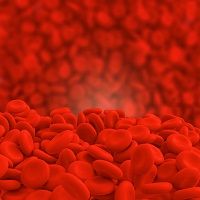Novel Reversal Agent Found Effective
An investigational drug called andexanet alfa that can reverse the anticoagulant effects of FXa inhibitors met all primary and secondary efficacy endpoints, researchers said in a late-breaking clinical trial report at the AHA meeting in Orlando.

An investigational drug called andexanet alfa that can reverse the anticoagulant effects of FXa inhibitors met all primary and secondary efficacy endpoints, researchers said today at the 2015 American Heart Association Scientific Sessions in Orlando, FL.
Reporting on the results of its phase 3 trial of andexanet alfa (Annexa/Portola Pharma), in a late-breaking clinical trial session, Mark Crowther, M.D., MSc., professor in the Department of Medicine, Hematology and Thromboembolism and Pathology and Molecular Medicine, McMaster University, Hamilton, Ontario discussed trial results also published online today in the New England Journal of Medicine.
In that article, the research team wrote that the ANNEXA-A and ANNEXA-R trials were randomized, double-blind, placebo-controlled studies that were designed to evaluate the ability of andexanet to reverse anticoagulation with apixaban (Eliquis/ Pfizer and Bristol-Myers Squibb) or rivaroxaban (Xarelto/Bayer and Johnson & Johnson).
Healthy older volunteers were given 5 mg of apixaban twice daily or 20 mg of rivaroxaban daily. For each factor Xa inhibitor, a two-part randomized placebo-controlled study was conducted to evaluate andexanet administered as a bolus or as a bolus plus a 2-hour infusion. The primary outcome was the mean percent change in anti—factor Xa activity, which is a measure of factor Xa inhibition by the anticoagulant.
"Andexanet reversed the anticoagulant activity of apixaban and rivaroxaban in older healthy participants within minutes after administration and for the duration of infusion, without evidence of clinical toxic effects," they concluded.
Among the apixaban-treated participants, anti—factor Xa activity was reduced by 94% among those who received an andexanet bolus (24 participants), as compared with 21% among those who received placebo (9 participants) (P<0.001), and unbound apixaban concentration was reduced by 9.3 ng per milliliter versus 1.9 ng per milliliter (P<0.001); thrombin generation was fully restored in 100% versus 11% of the participants (P<0.001) within 2 to 5 minutes.
Among the rivaroxaban-treated participants, anti—factor Xa activity was reduced by 92% among those who received an andexanet bolus (27 participants), as compared with 18% among those who received placebo (14 participants) (P<0.001), and unbound rivaroxaban concentration was reduced by 23.4 ng per milliliter versus 4.2 ng per milliliter (P<0.001); thrombin generation was fully restored in 96% versus 7% of the participants (P<0.001).
These effects were sustained when andexanet was administered as a bolus plus an infusion. In a subgroup of participants, transient increases in levels ofd-dimer and prothrombin fragments 1 and 2 were observed, which resolved within 24 to 72 hours. No serious adverse or thrombotic events were reported.